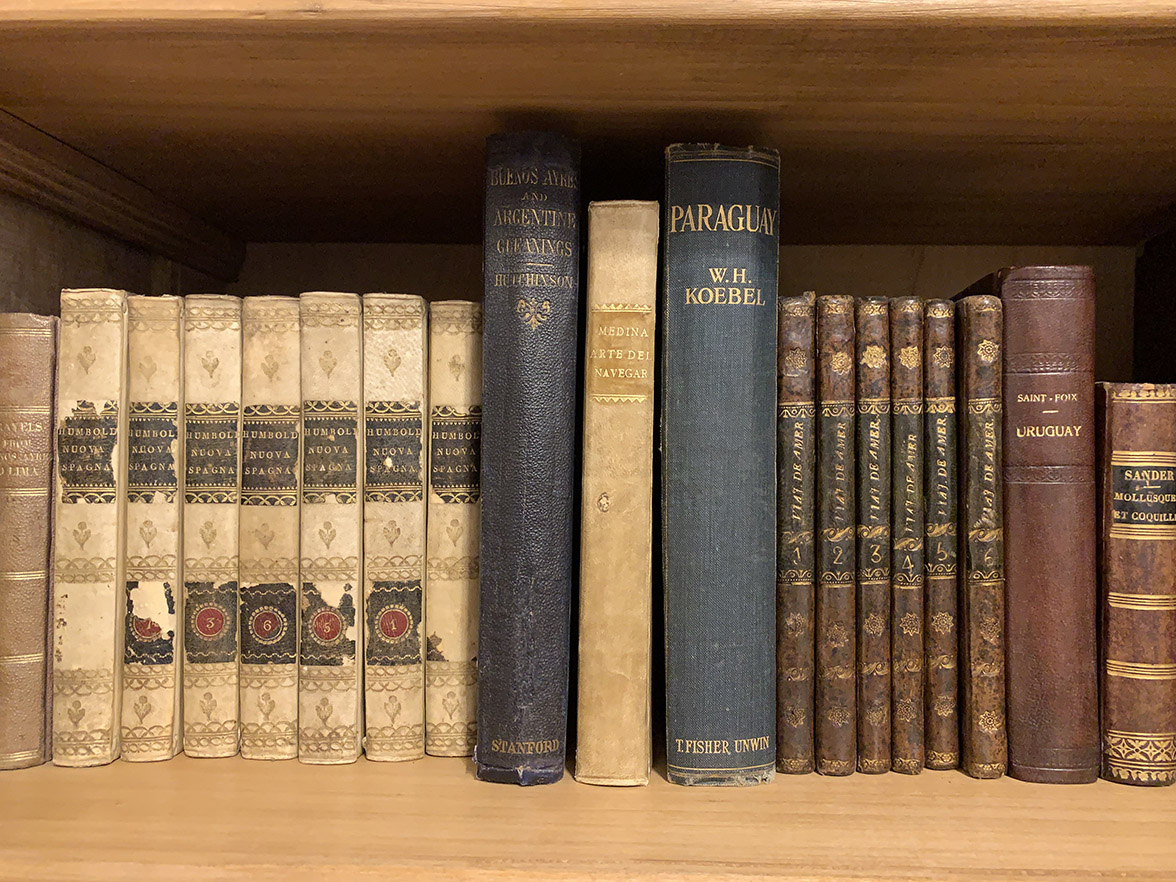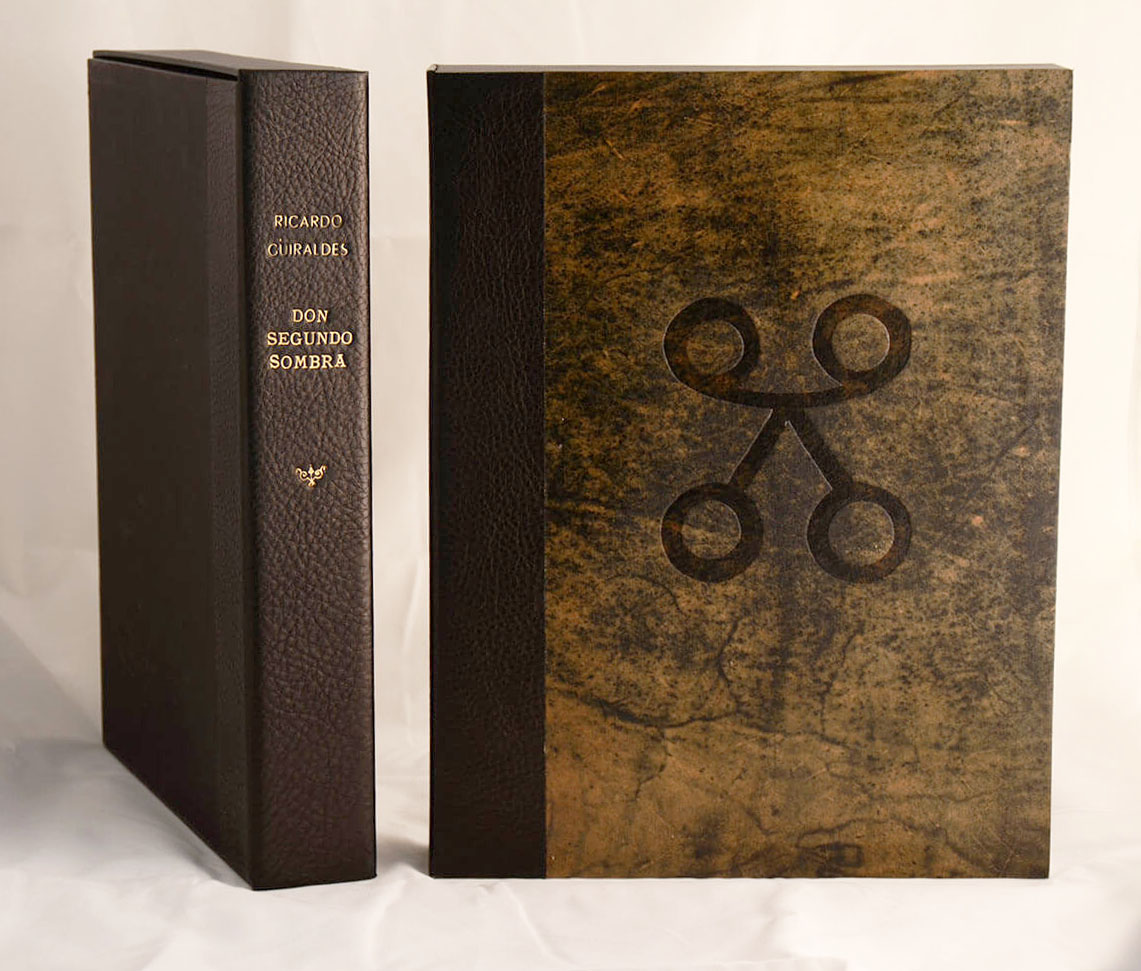We must confess that the list is not exhaustive, but it will certainly be very useful to you. We build it on the basis of a quarter of a century of experience as antiquarian booksellers, and after having made numerous mistakes guided only by enthusiasm. We also collect information in books intended for the practice of bibliophilia and we build this knowledge in encounters enjoyed with collectors and colleagues, a privilege afforded by these arts.
Of course, you are invited to enrich this information. If reading awakens new suggestions, we suggest sending them to info@hilariobooks.com
To start
1. It is important that each book is complete, and if possible, with its original binding, although it is also worth studying the later artistic bindings, some signed give prestige to the copy. In the case of 20th century works of literature, it is essential that they be preserved with their publisher's binding - best of all, that it is preserved in a box made ad hoc in a good binding workshop - and if it has been rebound, that it preserves its covers and up to the original spine.
2. It is an essential guide to have the most useful bibliographic sources for the subject you seek to gather: travelers, history, gaucho, Latin American literature, medicine, science, authors ... You have to review the copy to acquire with these reference works to indicate if it is a first edition and if it is complete, although there are some essential bibliographies that lack precise data on its content, such as the case of "Santos Gómez", Bibliography of travelers to Argentina: where it is only indicated with maps or with sheets, not to mention their exact quantity. And considering that many works lack an illustration index, the study copy may have 2 maps and 4 plates, and perhaps it should have 3 maps and 5 plates. In other words, it is incomplete and it is advisable not to acquire it, since completing a work is almost a chimera. In the most demanding libraries, only extremely rare titles resist this lack, such as a book that came out of the first printing press that worked in this part of America, the Jesuit one.
3. We have brought you a guide to Reference Libraries, it is worth forming one as a reference source, each title indicated there has enormous value if you collect. As for the topics of interest now, we invite you to visit the one referring to books by or about travelers in America: enter here.
4. A good idea is to buy the books in the house or catalog of the antique booksellers; In general, they indicate the bibliographic references and if there is any particularity in the copy, they warn it.
5. If you are going to buy works in auction houses, you should be attentive to the usual behavior of each one of them; there are many who do not review the copies and you may be in for the unpleasant surprise of acquiring an incomplete book. In Hilario. Arts Letters Trades each book, brochure or print put up for sale is controlled page by page and if we notice a deficiency, we indicate it, although in general, we discard it and it is not part of our catalog.
6. When in a catalog we read "not in ..." -for example, in the case of a traveler to Argentina, "not in Santos Gómez" -, it is indicating its rarity, and said book becomes a temptation for every bibliophile . If we read “not in Suárez”, it means that this title was not included in the catalog No. 25 of the Cervantes bookstore, by Julio Suárez, published in Buenos Aires in 1933, nor in its Supplement, of 1939, in which case we will be again in front of a bibliographic pearl.
7. If you visit the interior of the country, we recommend you go to the bookstores of the local universities, they usually offer in their lists some titles of great value for our libraries. We extend this suggestion to the book fair in Buenos Aires, the provincial and university stands offer that opportunity, and in the same space.
8. Check that each book entered your library is clean and without active traces of any insects; There are those that eat only the edges of the paper and those that enter by forming tunnels. In both cases you should keep it away from the other books and make an immediate treatment consulting a professional. The practice of opening books and turning their pages airing them is extremely useful, in addition to enjoying each issue, reviewing them and discouraging the presence of these bibliophages. An old saying says: the best way to take care of books is to read them.
9. Do not discard the second and other editions; they may contain features that make them special, for example, "corrected and expanded", "best illustrated" and more. It is important to see how it is presented in the catalog where it is offered, and to go to the bibliographic references, there will be the pertinent information. And they can be extremely attractive, rare and collectible.
10. Study the exemplar under analysis, it can be from a special print run, or from a header ... At the end you will find the necessary data: so many copies on standard paper ... and so many on paper... Numbered copies of the print run shorter, signed by the author and illustrator. And you can get your hands on one of them; of course, much more attractive and valuable than another of the current circulation.

